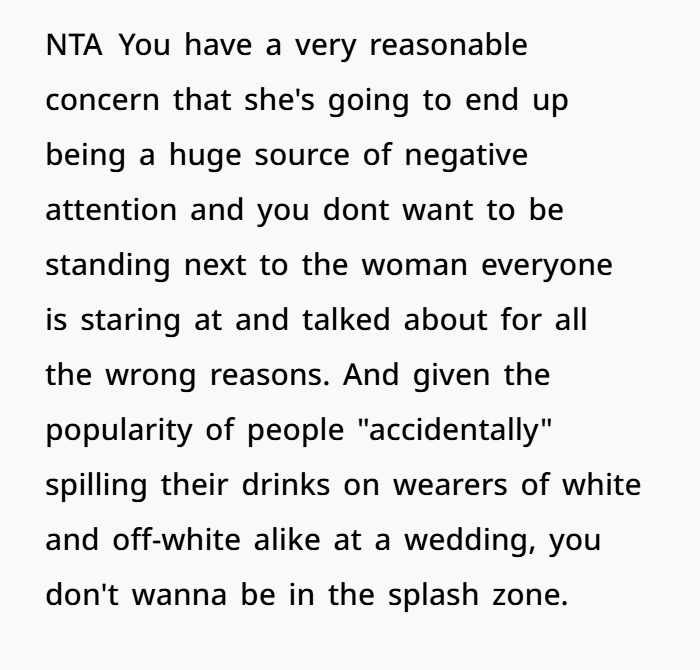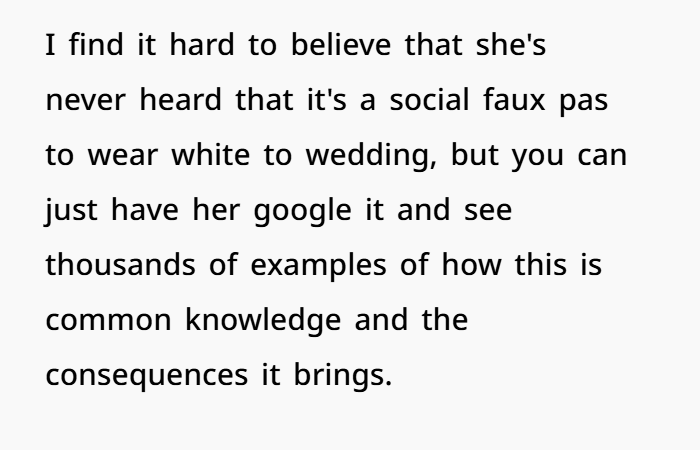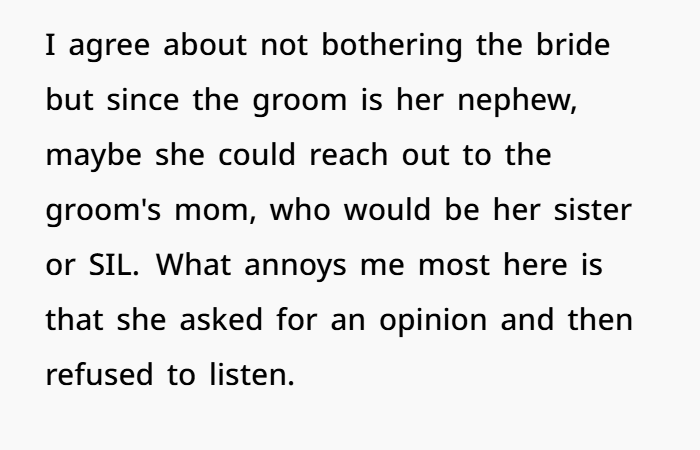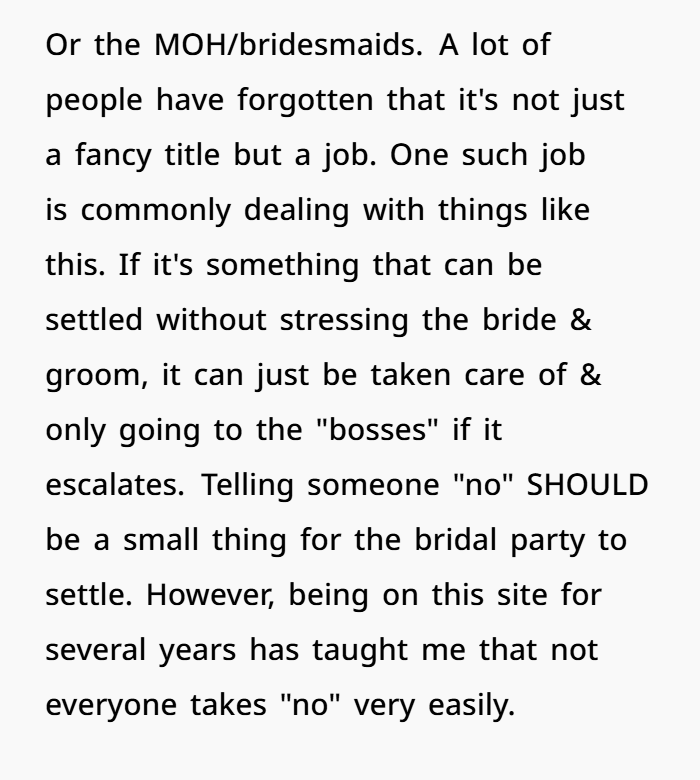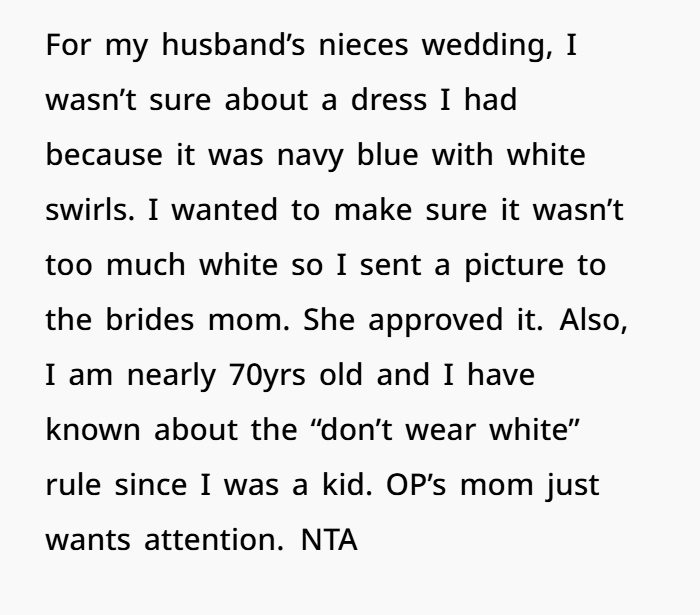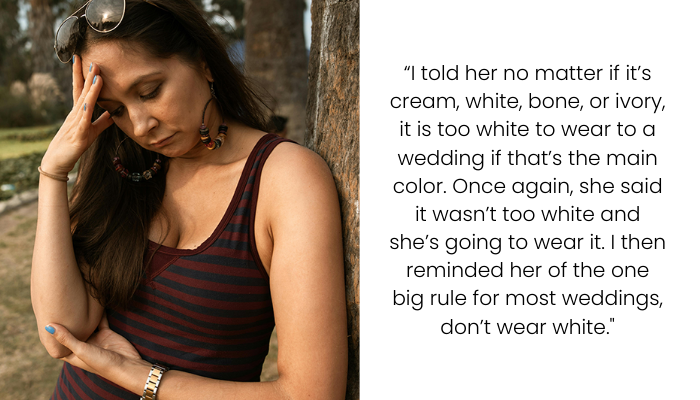“AITA For Telling My Mom I Won’t Attend A Wedding If She Wears A Certain Dress”
In a recent family dilemma, a 24-year-old woman found herself at odds with her 60-year-old mother over appropriate wedding attire. The mother purchased a dress predominantly white, featuring floral designs, intended for her nephew’s upcoming wedding—the first in the family in 25 years. Despite the daughter’s concerns about the dress’s color being inappropriate for a wedding, the mother insisted it was suitable, leading to a heated debate. The daughter ultimately threatened not to attend the wedding if her mother chose to wear the contentious dress, prompting the mother to seek a second opinion from her other daughter and accuse the first of overreacting.
Wedding guests should be respectful of the bride and groom and should refrain from doing anything that might upset them on their big day
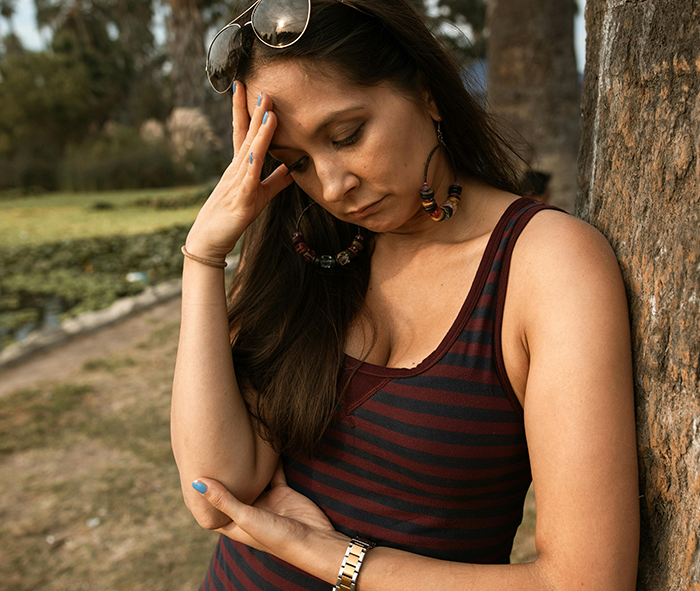
The poster and her 60-year-old mother were set to attend her cousin’s wedding, and so her mom decided to show her the dress she was going to wear
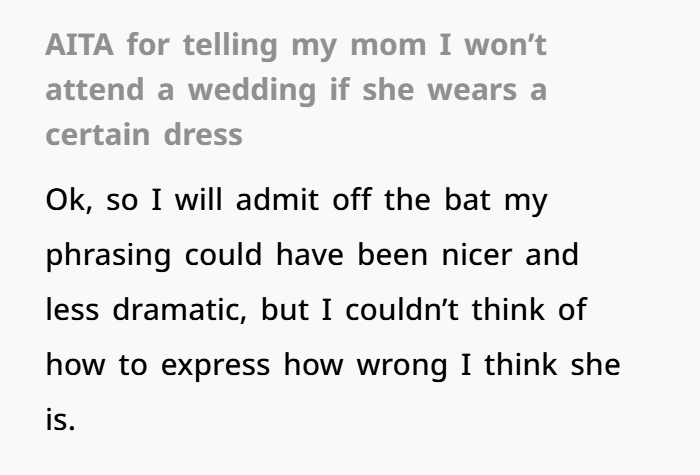
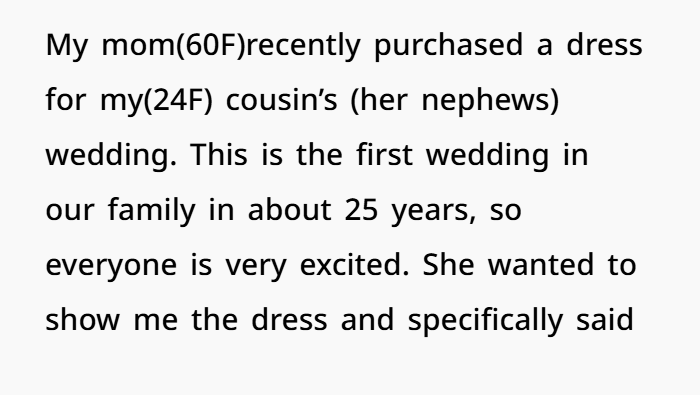
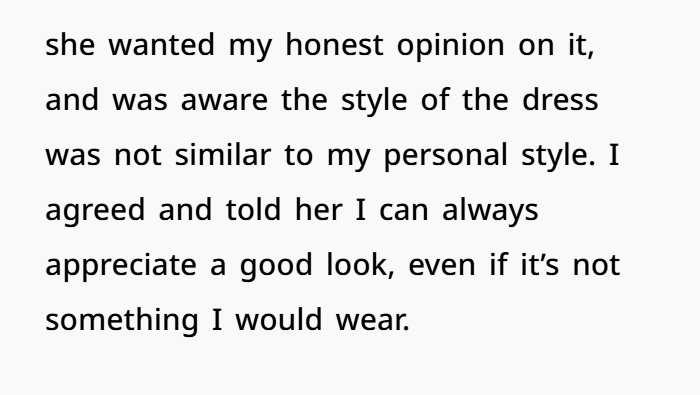
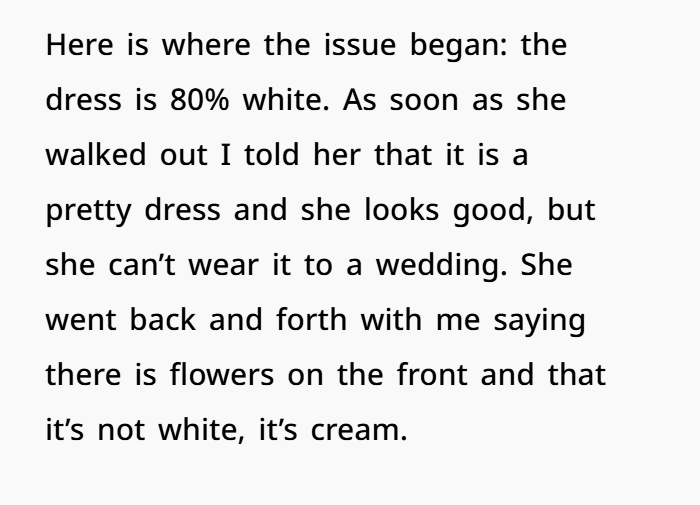

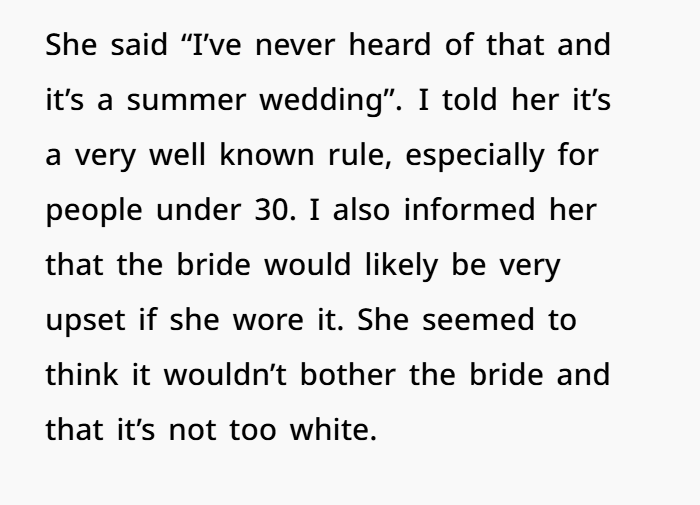


Weddings are steeped in traditions and customs, many of which are designed to honor the couple’s special day and maintain a sense of decorum among guests. One of the most universally acknowledged etiquette rules is that guests should avoid wearing white, as this color is traditionally reserved for the bride. This practice helps ensure that the bride remains the focal point of the event, free from any unintended competition or distraction.
The origins of this tradition date back to the 19th century when Queen Victoria popularized the white wedding dress. Since then, wearing white has become a symbol of bridal attire in many Western cultures. As a result, guests donning white or predominantly white outfits can be perceived as attempting to upstage the bride, even if unintentionally. This sentiment is echoed by wedding etiquette experts who advise guests to steer clear of white, cream, or ivory ensembles unless explicitly stated otherwise by the couple.
The controversy surrounding guests wearing white to weddings is not merely theoretical. Numerous instances have been reported where guests faced backlash for their attire choices. For example, actress Sydney Sweeney received criticism for wearing a pale blue dress to a wedding, with some arguing that the color was too close to white and could overshadow the bride. Similarly, a TikTok video went viral after showcasing a guest in a white, bridal-like gown, reigniting debates about appropriate wedding guest attire.

In the context of the Reddit post, the concern arises from the mother’s choice of a dress that is 80% white for a family wedding. Despite the presence of floral patterns, the dominant white hue could be perceived as inappropriate by the bride and other attendees. This aligns with expert opinions stating that even dresses with white backgrounds and prints can be contentious, as they may still draw attention away from the bride.
It’s also worth noting that while some modern weddings may have relaxed dress codes, the traditional view against guests wearing white remains prevalent. Unless the couple has specifically requested or approved white attire for guests, it’s advisable to choose other colors to avoid potential discomfort or offense. This approach not only respects longstanding traditions but also demonstrates consideration for the couple’s preferences on their significant day.
In conclusion, the apprehension expressed about the mother’s dress choice is rooted in well-established wedding etiquette norms. Opting for attire that doesn’t feature white or closely related shades is a thoughtful way to honor the bride and maintain the celebratory spirit of the occasion.
People sided with the poster and felt that her mother was just trying to draw attention to herself
